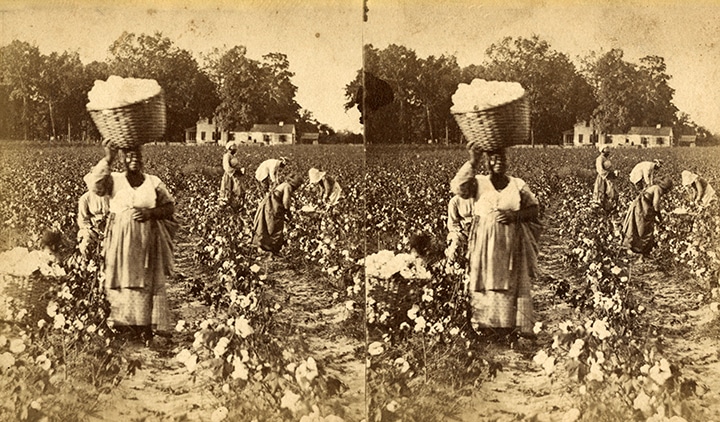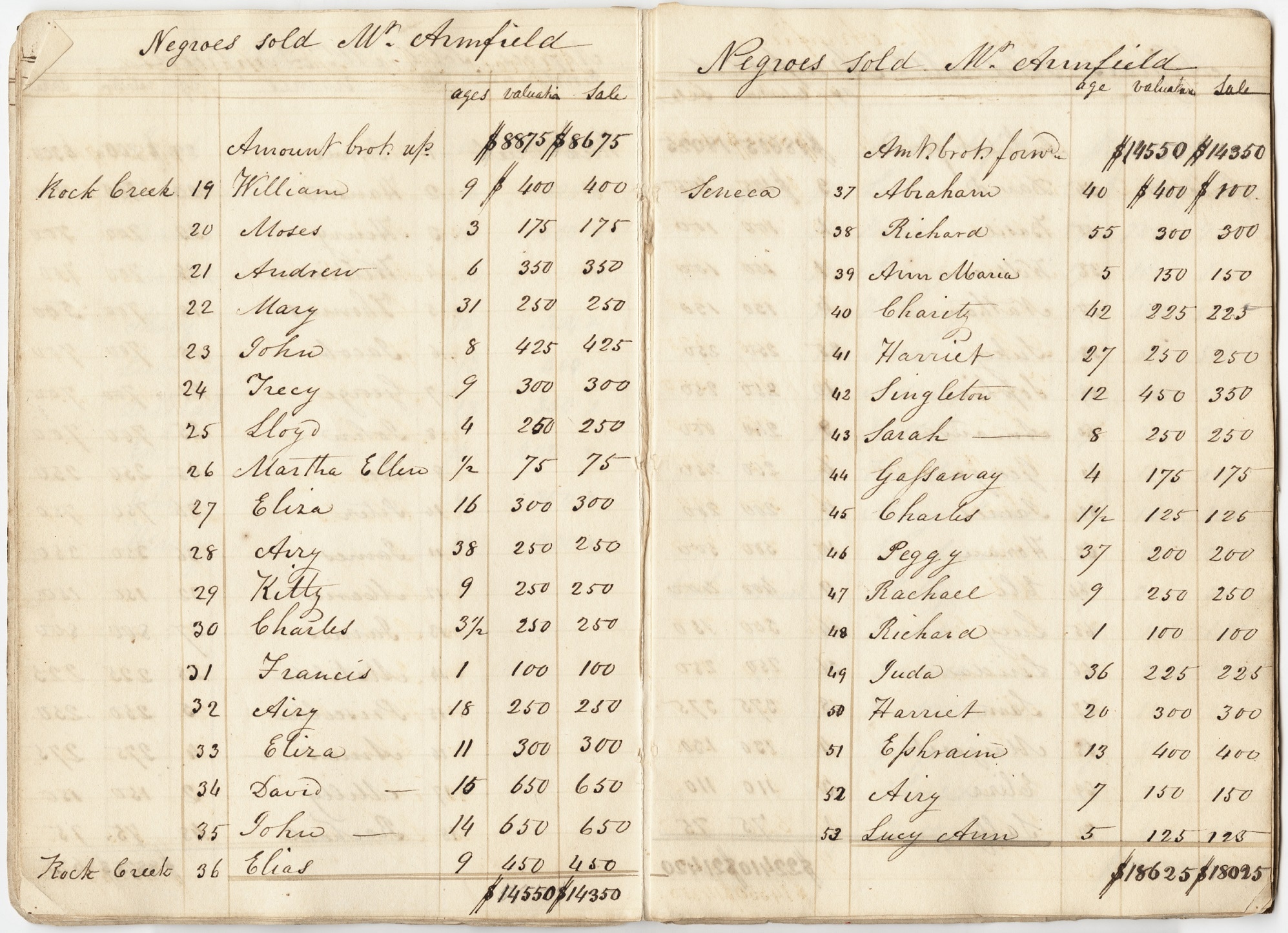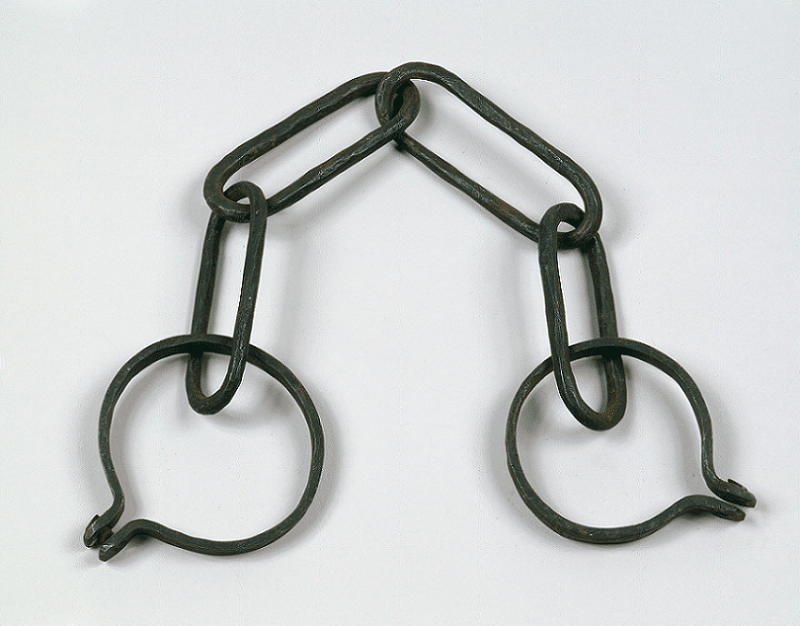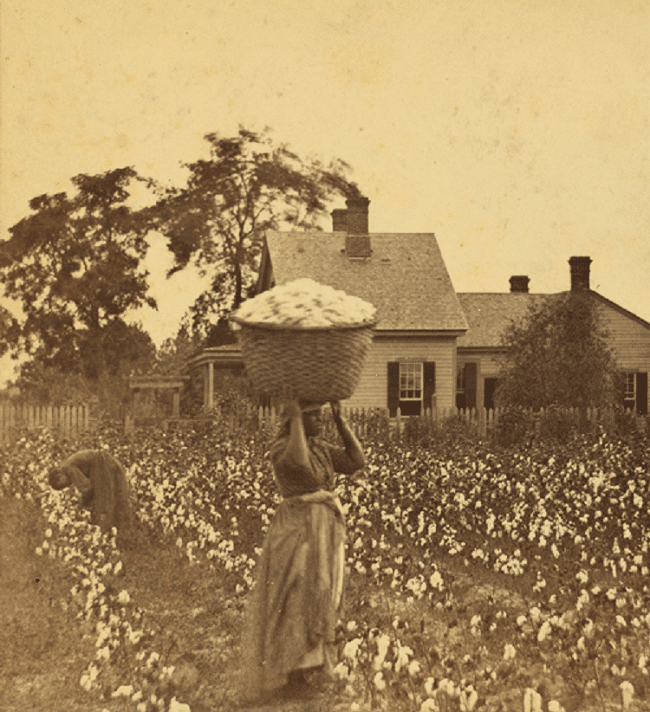Click here to view a transcription of the Account Book.
Background
In 1860, the last census conducted in the antebellum period revealed that over 12 percent of the total population of the United States was enslaved. The majority of the 3,952,762 enslaved people living in the United States were held on Southern plantations. They were forced to grow, harvest, and ship the cash crops that enriched their owners. Their forced labor was the foundation of the Southern economy.
On plantations, enslaved people were treated as commodities, not human beings. Their worth was determined based on the type and amount of work they could accomplish. They were considered a part of the overall wealth of slave-holding families. If an enslaver needed money quickly, enslaved people were sold without any consideration for their family or community ties.
About the Image
These sources illustrate the lives of enslaved women in the plantation system. The photographs show the fieldwork most male and female plantation slaves were forced to do. Although they did the same work as men, enslaved women were considered weaker. Slave owners did not value them as highly as enslaved men. But if an enslaved woman was capable of bearing children, her value was calculated differently (see Life Story: Anarcha, Betsy, Lucy for more information).
Charles Benedict Calvert’s slave account book demonstrates how enslavers assigned monetary value to men and women differently. On this page, one-year-old Sally is sold for $75. And one-year-old Basil is sold for $100. Although we do not know exactly what led to this difference, Sally’s sex probably played a part.
Shackles were a powerful tool used to dehumanize enslaved women and men on plantations and beyond. Enslavers used shackles to limit the movements of enslaved people as punishment. Shackles were also used to try to control enslaved people during travel or public sales.
Vocabulary
- antebellum: Before the American Civil War.
- cash crop: Something that is grown to be sold rather than used by the farmer. In the antebellum south, the main cash crop was cotton.
- commodity: A product that can be bought or sold.
- dehumanization: The process of depriving a person of their human qualities.
Discussion Questions
- What do the photographs reveal about the labor expected of enslaved people in the plantation system?
- What kind of information does Charles Benedict Calvert include in his slave sale records? What information does he leave out? What does this reveal about his attitude towards his enslaved people?
- Why have shackles become a primary symbol of the cruelties of slavery?
- When we consider these sources together, what do they reveal about the lives of enslaved people caught up in the Southern plantation system?
Suggested Activities
- APUSH Connection: 5.5 Sectional Conflict: Regional Differences
- Include these historical sources in any lesson about the plantation system.
- Combine these sources with those of the Resistance resources for a lesson on the indignities enslaved women endured and the ways they sought to dismantle the system of slavery.
- For a larger lesson about how slavery was enacted in different eras and regions of the United States, combine these resources with any of the following: Fighting for Freedom in New Amsterdam, Life Story: Dorothy Angola, Life Story: Lisbeth Anthonijsen, Legislating Reproduction and Racial Difference, Mortar and Pestle for Pounding Rice, The Middle Passage, Life on the Encomienda, Women and the Code Noir, Life Story: Marie-Josèphe Angélique, Conditional Manumission, The Business of Slavery, Runaway Slaves, Life Story: McLennan’s Enslaved Woman, Life Story: Sarah, Life Story: Tituba, Life Story: Nansi Wiggins, Incidents in the Life of a Slave Girl, Urban Slavery, Life Story: Sojourner Truth, Life Story: Harriet Tubman, Life Story: Matilda Hughes, Life Story: Susie Baker King Taylor, and Life Story: Elizabeth Keckley.
- Teach these documents together with the life story of Ella Gertrude Clanton Thomas to demonstrate how Southern white people profited from the plantation system.
- In addition to the indignities highlighted by these resources, enslaved women were frequently subjected to sexual exploitation at the hands of slave owners. Use any of the following resources to explore this history with your students: Life Story: Lisbeth Anthonijsen, Legislating Reproduction and Racial Difference, Women and the Code Noir, Life Story: Anarcha, Betsy, and Lucy, Urban Slavery, and Life Story: Elizabeth Keckley.
- The exploitation of Black women did not end with the Civil War. Read Calling Out Sexual Violence to learn more.
Themes
POWER AND POLITICS; WORK, LABOR, AND ECONOMY










